Waigela is a decorative shrub that looks great in any garden surrounded by a variety of plants. Especially successfully Waigel will fit in the Japanese design of the garden or the preservation site.
In the landscape design of Wegel's planting, it looks very impressive as a living fence, on the slopes, in combinations with other long-term plantings.
This plant got its name in honor of the German scientist Vaigel, who was very devoted to Botanic, chemistry, as well as medicine. At one time, he was the director of the Greifswald Botanical Garden and made a significant contribution to the development of natural sciences, for which he was named and called the genus of fragrant ornamental plants.
All types of Weigel are famous for its long flowering period. Sometimes it lasts more than a month, glading eyes with a magnificent scolding of bright colors.
Features Weigel
- Waigela is a shrub tide up to 2 m and about the same diameter, with a thick, saturated color of foliage and flowers of tubular shape.
- Leaves of shrubs can have different shades of green, as well as burgundy colors in summer. Warm autumn, they can become yellow, orange, red or even violet.
- Flowers are distinguished by a large variety of colors - these are pink, red, cream, yellow and orange tones. Flowers only occasionally single, mostly collected in inflorescences from 2 to 6 pieces. Waigela flowers very abundant, the bush is like all covered with a richness of large bright colors against a rich greens. Waigel's flowers love bees, bumblebees, and in the south of the United States, near this shrub, even hummingbirds can be found.
- Wayegeli flowers have a property to change the shade from more tender at the beginning of flowering to more saturated by the end of this period.
- Another pleasant property of the Weigel property - she can re-bloom at the end of summer or at the beginning of the autumn, that a competent gardener indicates a good condition of the bush and, accordingly, the correct care. True, the re-blossom is not so violent, as in the spring, but still is a pleasant bonus for lovers of this plant.
- Kuste Weigel loves a moderate amount of moisture and feels well in the sun, and also calmly transfers her half.
A variety of types of Weigel
There are many varieties of Weigel. They are distinguished both by their external characteristics - the size and color of inflorescences, foliage, the height of the bush, and climatic features.
Waigela Hybrid
Waigela Hybrid blooms very magnificently and has a spherical crown. It has a low growth - 1.5 m. Flowers are very fragrant, may have pink, purple and white shades. Vaigel hybrid varieties are derived as a result of crossing different shrubs. Popular Weigel hybrid varieties include:
- Bristol Ruby. Bushes have bright green, long leaves and red flowers. Flowers in June.
- Eva Ratke. These are low bushes 1 m high. Have a saturated green leaves and shiny red flowers. Blossom of shrub can be observed in June.
- Rose. This is a 2.5 m plant height, has pink flowers with white splashes. In the fall, the leaves change the color on the red. Of all the representatives of Hybrid Weigel, this is the most winter-hardy variety.
Weigla Middondorfa
Growing on Sakhalin, in Japan, China. This shrub is 1.5 m in growth. It has oblong leaves and yellow large flowers. It blooms 2 times over the season, giving the opportunity to gardeners twice a year to collect seeds. Wayegeli Middaddorf's bushes look well both alone and in group springs.
Wayegel blooming
- This is one of the high scrupter representatives. Growing in Japan, China. Blooms in May or early summer. Blossom continues for about 20 days. Flowers of saturated pink color are collected in inflorescences of 4 pieces. It feels well both at open solar sites and in a bit shaded places.
- It does not differ in the tolerance of cold, but quickly restored after frost. Loves fertile soils and moderate moisture, while it is important to avoid excess water. With a strong knowing bushes need to water.
- Garden varieties of Weigel blooming are "purple", "Variagates" and others.
Waigela blooming Alexander
- The most popular representative of the blooming Weigel is the variety Alexander. It has a solemn color not only colors, but also foliage. The leaves have burgundy shades, and flowers are red and pink tones. This plant has a growth of about 1.5 m. Waigela blooming Alexander has gold and silver awards from the US Garden Societies and Holland.
- Flowers Wuegel blooming (or Florida) Alexander abundantly from June to July, but flowering can last until September, the truth is in a more modest form. The leaves change their color from burgundy to violet depending on the time of year. The foliage is last saved on the bush. The shadow is resistant to diseases, but it blooms not so magnificent as the sun. The plant loves moisture, but does not tolerate its excess.
- If immediately after flowering the plant, it will perceive such a phenomenon as a continuation of summer, and can be broken again.
- Description Weigel Alexandra, as a decorative plant, always takes into account its value in landscape compositions. This shrub is simply created in order to be a living garden decoration. It has many indisputable advantages that inspire gardeners for landing and care for this miracle:
- bright, saturated painting during flowering period;
- changeable color leaves;
- krone beautiful spherical shape;
- the ability to make the right form with a haircut to create a living fence;
- beautiful background for other perennial plants;
- rich view against the background of coniferous neighbors;
- the symmetric landing of bushes at the entrance to the territory or to the house immediately attracts attention, especially during flowering.
Landing Weigel
- This shrub blooms perfectly on the sun filled areas, although you can admit a weak half. To avoid damage to the branches of the plant by the wind, it is better to choose a place protected from air flows for the landing of Weigela.
- The landing of Vegel's bushes Alexandra is better to produce in spring so that the roots of the plant grow and strengthened quite strongly for the upcoming wintering. Shrub seedlings need to be raised up to 3 years of age before landing for a permanent place.
- The bushes are sled through the gaps of 2.5-3 m from each other. The pit for planting the bush should have parameters 50 by 50 cm. The root neck is not sprinkled with the ground intensively, but leave at the ground level.
- Wayegel loves fertile, loose soil, but does not tolerate excess moisture. As a soil for landing, a mixture of humus, sand and a delicate earth is used. At the bottom of the pit placed a mixture of sand and gravel with a thickness of 15 cm, which performs drainage function.
- The soil near the bush is covered with a mulch of small bark and sawdust for the preservation of the plant during wintering.
Care for shrub
- The care of Weigel Alexander includes timely irrigation, feeding, protection against pests and diseases, as well as pruning the plants. Watering should be very neat, about 8 liters of water on 1 bush. If in the winter there was little snow, then we need to water immediately after his melting.
- Stealing Weigel is carried out several times a year. In early spring, it is necessary to enter a mixture of mineral components into the soil, including superphosphate, urea, potassium. During the formation of flowers in the ground, potassium and double superphosphate are made at the rate of 30 g of each substance per 1 sq. M. You can also make organic fertilizers, which positively affect the growth of the bush.
- Harm to shrub Wegel is most often capable of fault and caterpillars, eating sheet. In sultry weather, she can attack web ticks. They can be defeated by home. Harmful insects do not tolerate the combination of household soap and Machorka, or pepper and garlic.
- If the young shoots are yellow and faded, it is possible that their roots were attacked by larvae of May beetles or bear, which fell into the soil with the soil components. Solutions of carboofos or actara shed under the root of the shrub will help to get rid of them.
- If you are satisfied with the appearance of your Waygel bushes, then you can leave everything as it is. Only in the spring it is necessary to conduct a sanitary removal of dead and branches, and after flowering, trim branches over 3 years old. It rejuvenates the bush and retains his beautiful appearance.
- In order for the shrub safely overlooking, it needs to be prepared for the field of cold. The branches of the shrub bind to the rope and be flexing down, after which they sprinkle with dry fallen foliage or agrofluoride. Snow has even greater insulation effect on Weigel. When it appears, you can additionally sprinkle a shrub. Especially carefully protecting from the cold needlands in the first year of life.
Reproduction of Weigel Alexandra
- Wayegel breeds seeds and cuttings. Seeds spare enough quickly. In order not to mess with them, you can leave the seeds that have shuffled in the fall, and in the spring, after their germination, do the most strong sprouts and care for them for 2 years, after which it will be possible to transplant wherever you decide.
- With the help of seeds, it is most often reproduced in the wild, but still this process for gardeners is quite time-consuming and long-term, so in decorative purposes it is still better to multiply this plant with cuttings.
- The cuttings are formed by cutting green processes to parts of 10 - 15 cm long so that each 4 leaves are located on each. Before planting in the ground, the processing of heteruxin cutting agents for better development of the root system is produced. After that, it is planted in the ground under the film or in the greenhouse.
- The blooming young bush begins at the age of 3.
Weigel Calendar
For the convenience of beginner and experienced gardeners, you can make a special calendar, which will remind you of the necessary care for Weigel and other plants throughout the year.
The first 3 months of the year - the sealing of the snow cover at the root of the shrub, which serves as an additional protection against rodents. Release branches from wet snow to avoid strong pressure and breakdowns of shoots.
- April - circumcision of branches affected by the cold. Mulching the soil around the shrub. Watering and the first soil fertilizer. Landing seedlings or seeds.
- May is protection against possible frosts on the soil. Spraying. Watering. The destruction of weeds.
- June is a weeding, watering, soil fertilizer. Shining. Fighting pests and diseases.
- July - Circumcision of the shrub crown. Removing fading flowers. Care for young shoots. Spraying from insects and diseases.
- August - care for young shoots, soil fertilizer, watering and weeding.
- September - Mulching and processing of soil, care for young shoots.
- October - cleaning of fallen leaves. Preparation for wintering: flexing branches to Earth and soil mulch peat layer or oak leaves.
- November - protection against rodents with bait.
- December is a snow cover seal, on the soil near the shrub, the removal of snow from the branches.
Useful tips of gardeners
- To improve the appearance of the crown of the bush, the tops are pinching 2 times over the summer: in mid-June and in August.
- It is important that the Sun illuminates the Wayegel bush is at least half of the day.
- Do not carry the root of the root bush.
- Wayigel bushes are comfortable near the walls and high Flora representatives.
- Winter hardiness Weigel Alexandra enhances age, so after 4 years, the bush can already be not covered before the arrival of winter.
- So that the plant goes well in your garden, its seedlings are worth buying only in local organizations.
- Before choosing Weigel Alexandra not only pay attention to his beautiful appearance shown to you on a colorful photo, but also carefully examine its climatic characteristics, as well as the peculiarities of care. Make sure this plant can really come in in your garden.
Waigela blooming Alexander surprises and enthusiasm colors and paints, and also has a variable, intriguing character. Like any plant, this shrub likes to feel the attention and care of the owners, for which generously thanks with its beautiful flowers and flavors.

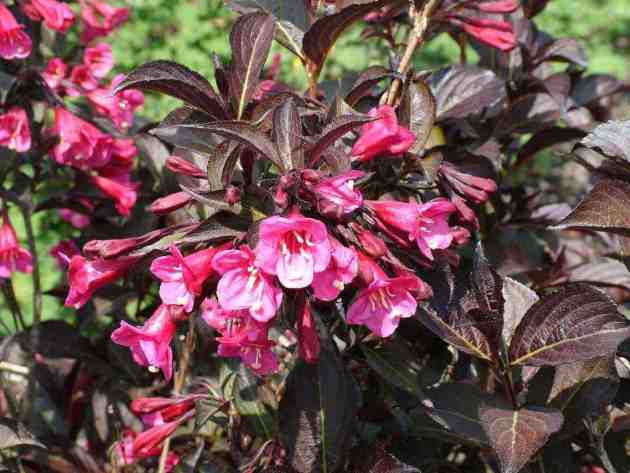
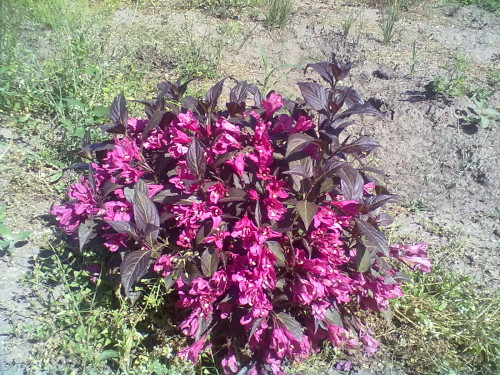
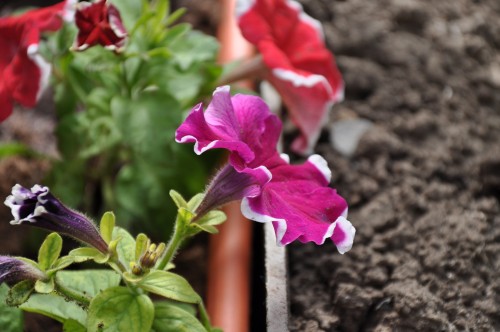
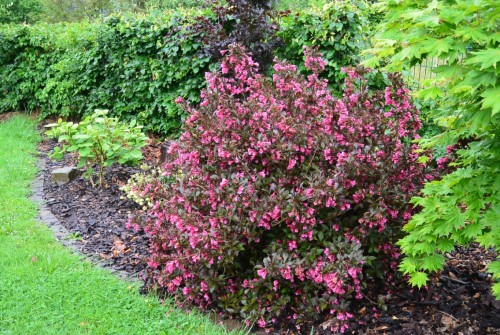

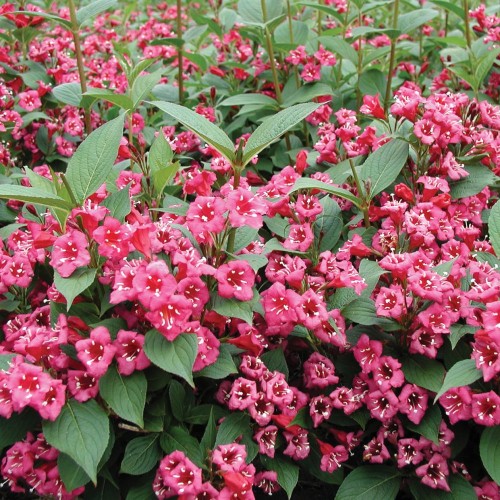
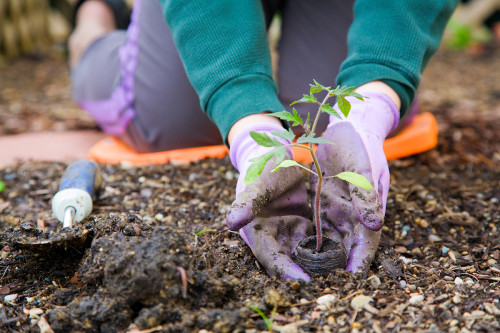












 Start a discussion ...
Start a discussion ...